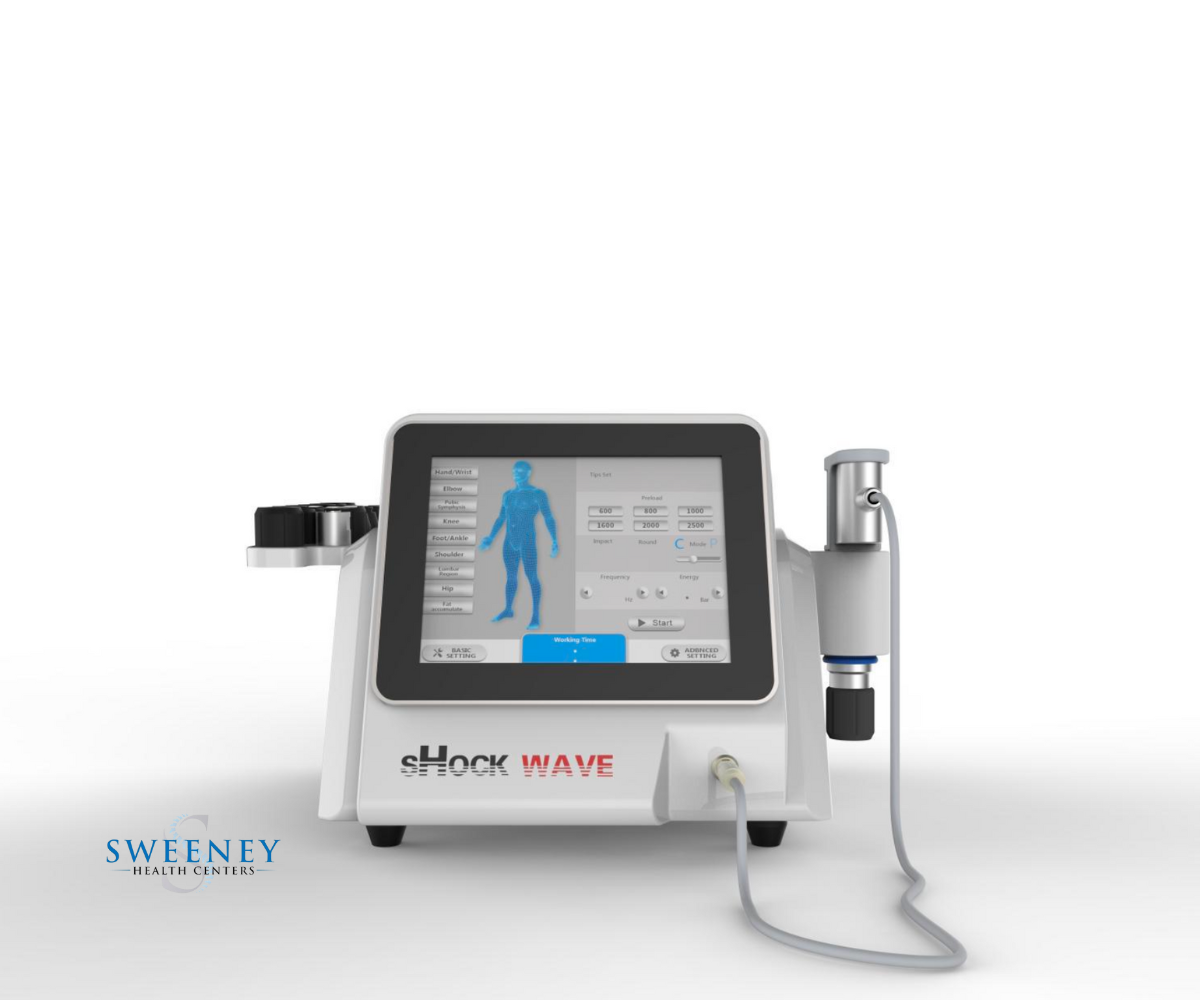Shock Wave Therapy in the Treatment of Neuropathy
Shock wave therapy, also known as extracorporeal shock wave therapy (ESWT), is an innovative treatment gaining popularity for its effectiveness in addressing neuropathy. Neuropathy, a condition resulting from damaged nerves, often leads to pain, numbness, and weakness, particularly in the hands and feet. Shock wave therapy offers a non-invasive solution to alleviate these symptoms, promoting healing and restoring function.
Shockwave Therapy Activates Local Stem Cells
One of the most significant benefits of shock wave therapy is its ability to activate local stem cells. Stem cells are undifferentiated cells that have the potential to develop into various types of cells in the body, playing a crucial role in the repair and regeneration of damaged tissues. When shock waves are applied to the affected area, they stimulate the release of growth factors and other bioactive substances, which, in turn, activate the local stem cells. This activation promotes tissue regeneration and repair, enhancing the body’s natural healing processes.
Mechanism of Action
Shock wave therapy involves the application of high-energy sound waves to the affected area. These sound waves create microtrauma in the tissues, which triggers a biological response that leads to increased blood flow, the formation of new blood vessels (angiogenesis), and the activation of stem cells. The increased blood flow brings essential nutrients and oxygen to the damaged area, facilitating healing and reducing inflammation.
Clinical Evidence
Several studies have demonstrated the effectiveness of shock wave therapy in activating local stem cells and promoting tissue regeneration. For instance, a study published in the Journal of Translational Medicine found that shock wave therapy significantly enhanced the proliferation and differentiation of stem cells in patients with chronic neuropathy. Another study in the Journal of Orthopaedic Research reported similar findings, highlighting the therapy’s potential in regenerative medicine.
Elimination of Pain in Seconds
Shock wave therapy is renowned for its rapid pain relief. Patients often experience significant pain reduction within seconds of treatment, making it an attractive option for those suffering from chronic neuropathy.
How It Works
The mechanism behind the immediate pain relief is not entirely understood, but it is believed that shock waves modulate nerve function and disrupt pain pathways. The therapy also induces the release of endorphins, the body’s natural painkillers, which help to alleviate pain quickly.
Patient Testimonials
Many patients report remarkable improvements after just a few sessions of shock wave therapy. For example, a patient suffering from diabetic neuropathy described the treatment as life-changing, noting that the debilitating pain she had endured for years was significantly reduced after the first session. Such testimonials underscore the therapy’s potential to improve the quality of life for those with chronic pain conditions.
Breaking Up Adhesions in Muscles and Tendons
Shock wave therapy is highly effective in breaking up adhesions in muscles and tendons. Adhesions are bands of scar tissue that can form after injury or surgery, leading to restricted movement and pain.
Understanding Adhesions
Adhesions occur when collagen fibers in the connective tissue become disorganized and stick together. This can happen due to various reasons, including trauma, overuse injuries, and surgical procedures. Adhesions restrict the normal gliding of tissues, causing pain and limited range of motion.
Therapeutic Effects of Shock Waves
Shock waves penetrate deep into the tissues, breaking up these adhesions and restoring normal tissue architecture. The mechanical forces generated by the shock waves disrupt the disorganized collagen fibers, allowing them to realign properly. This process not only alleviates pain but also improves mobility and function.
Case Studies
A case study published in the American Journal of Sports Medicine highlighted the effectiveness of shock wave therapy in treating athletes with chronic tendon adhesions. The study reported significant improvements in pain and function after a series of shock wave treatments, emphasizing the therapy’s potential in sports medicine and rehabilitation.
Reduction of Inflammation
Inflammation is a common feature of many neuropathic conditions, contributing to pain and tissue damage. Shock wave therapy has been shown to reduce inflammation effectively, providing relief and promoting healing.
Anti-Inflammatory Mechanisms
Shock wave therapy reduces inflammation through several mechanisms. Firstly, the mechanical forces generated by the shock waves stimulate the release of anti-inflammatory cytokines, which help to modulate the body’s inflammatory response. Secondly, the therapy improves blood circulation, which aids in the removal of inflammatory mediators from the affected area. Finally, shock wave therapy promotes cellular repair processes, helping to resolve inflammation at its source.
Scientific Evidence
Research published in the Journal of Inflammation Research has demonstrated the anti-inflammatory effects of shock wave therapy in various conditions, including neuropathy. The study found that patients who received shock wave therapy showed significant reductions in inflammatory markers and improved clinical outcomes compared to those who did not receive the treatment.
Clinical Applications
Shock wave therapy’s anti-inflammatory properties make it a valuable tool in managing various conditions associated with chronic inflammation. For instance, patients with rheumatoid arthritis, a condition characterized by severe inflammation, have reported substantial improvements in pain and joint function after undergoing shock wave therapy.
Shock wave therapy represents a breakthrough in the treatment of neuropathy and other conditions characterized by pain, inflammation, and tissue damage. Its ability to activate local stem cells, provide rapid pain relief, break up adhesions, and reduce inflammation makes it a versatile and powerful therapeutic option. With ongoing research and clinical advancements, shock wave therapy continues to demonstrate its potential to improve patient outcomes and enhance quality of life.
If you’d like to learn more about shockwave therapy at Sweeney Health Centers, contact us today!



